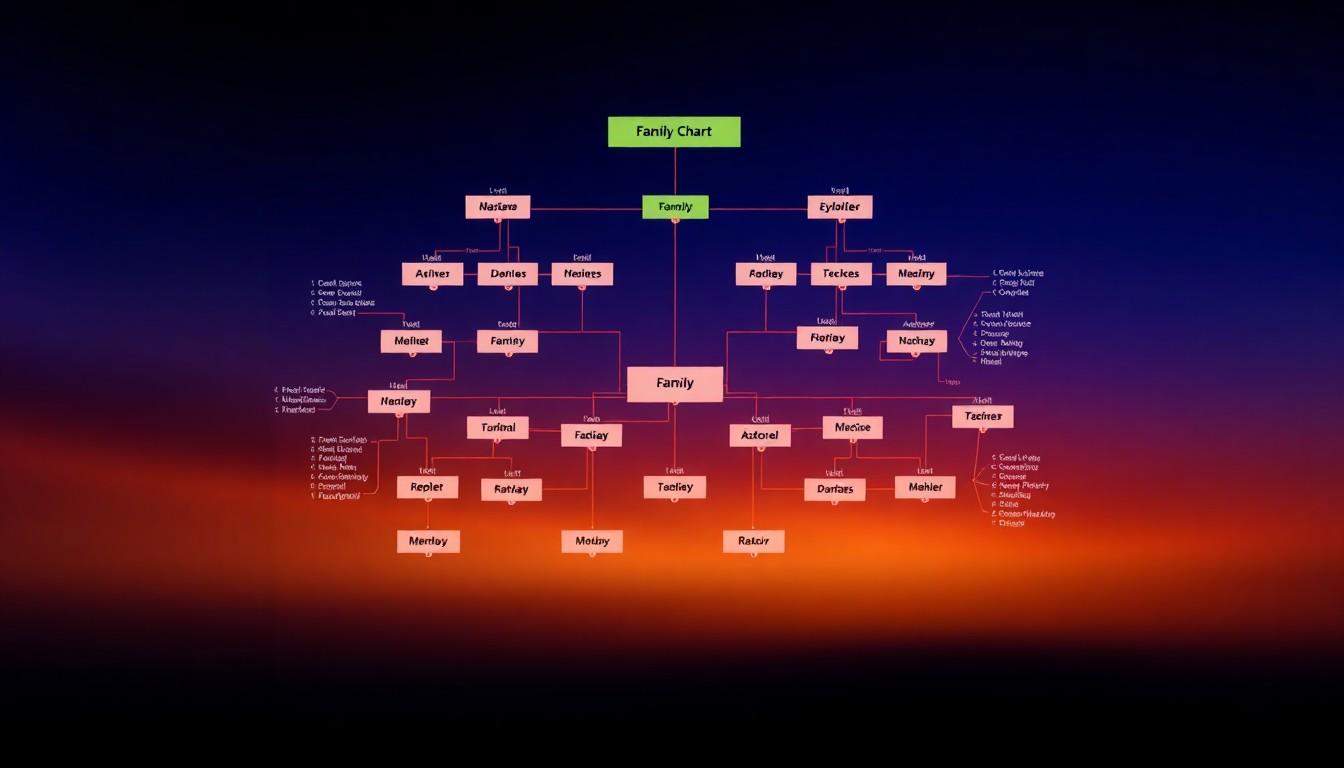The Best Fluffy Pancakes recipe you will fall in love with. Full of tips and tricks to help you make the best pancakes.

Family Relationships Chart: Unraveling the Secrets of Your Family Dynamics
Navigating the tangled web of family relationships can feel like trying to solve a Rubik’s Cube blindfolded. Who’s that distant cousin twice removed? And why does Aunt Edna insist on bringing her infamous fruitcake to every family gathering? A family relationships chart can be your trusty guide through this maze of connections, making it easier to keep track of who’s who in the family tree.
Family Relationships Chart
A family relationships chart serves as a visual representation of familial connections. This tool simplifies the complexities inherent in family dynamics.
Definition and Importance
A family relationships chart illustrates the various connections among family members. This chart categorizes relationships, showing direct lines of descent such as parents, children, and siblings. Identifying relationships becomes easier, especially in large or extended families. This resource holds importance for genealogy research and for understanding ancestry connections. It also aids in recognizing potential health risks that may stem from hereditary conditions. Visual organization of these relationships enriches one’s understanding of family history.
Types of Family Relationships Charts
Several types of family relationships charts exist to meet different needs. A pedigree chart primarily traces direct lineage, showing ancestors in a straightforward manner. Another common type is the family tree, which expands to include more relatives such as cousins and grandparents. Generation charts provide an overview of multiple generations, illustrating changes over time. Kinship charts display relationships through various branches, highlighting connections and marriages. Lastly, ancestral charts detail lineage back to early ancestors, aiding in comprehensive genealogy research. These diverse charts cater to various preferences and research focuses.
How to Create a Family Relationships Chart


Creating a family relationships chart involves systematic steps. A thorough approach simplifies gathering and organizing vital information about family ties.
Gathering Family Information
Start by collecting detailed information on each family member. Include names, birth dates, marriage dates, and key events. Utilize various sources like family documents, interviews, and online records. Engage relatives in conversations to uncover stories and connections. Family gatherings often provide opportunities to gather insights. Each piece of information contributes to a clearer picture of familial relationships. Understanding diverse connections enhances the overall representation, allowing accurate mapping of the family network.
Choosing the Right Format
Select a format that suits personal preferences and research goals. Common options include pedigree charts and family trees, which provide varying levels of detail. Pedigree charts highlight direct ancestral lines effectively, while family trees illustrate broader connections. Consider using kinship charts to clarify complex relationships in blended families. Digital tools simplify creating and sharing charts. Each format serves specific needs, so choose one that best represents the family’s unique structure and relationships.
Benefits of Using a Family Relationships Chart
Family relationships charts offer significant advantages in understanding familial dynamics. These charts simplify the complexity of family ties, making connections visually accessible.
Clear Visualization of Connections
Visual representation of family relationships makes identifying connections easier. It provides a straightforward overview of how family members relate to each other. The chart can display multiple generations, including grandparents, aunts, uncles, and cousins. This clarity enhances understanding, particularly in extended families. By exploring the layout, users can quickly grasp intricate family structures. Relationships become clear, allowing for a more organized approach to genealogy research. Charts also illuminate potential connections that might be overlooked in verbal discussions.
Enhanced Communication Within the Family
Improved communication is another key benefit of family relationships charts. When everyone understands their roles and connections, discussions about family history become richer. The chart serves as a reference point, igniting conversations during gatherings. Shared visuals encourage members to engage, increasing participation and interest. It helps clarify complex relationships, reducing confusion over family ties. Families can build meaningful stories around their history by using the chart as a catalyst. Overall, the chart fosters stronger bonds and a deeper appreciation for familial connections.
Common Mistakes to Avoid
Avoid common pitfalls when creating a family relationships chart. These mistakes can lead to confusion and misrepresentation of family connections.
Inaccurate Information
Collecting correct information is vital for an effective family relationships chart. Ensuring names, dates, and events accurately reflect family history prevents misunderstandings. Using reliable sources, such as official records or verified family documents, enhances accuracy. Engaging family members in discussions helps uncover details that may have been forgotten. Verifying information with multiple relatives provides a reliable foundation. Skipping these steps may lead to discrepancies in the chart.
Overcomplicating the Chart
Creating an overly complex chart can confuse rather than clarify family connections. Selecting a clear, organized format simplifies the presentation of relationships. Avoid including excessive details that distract from the primary connections. Using symbols or color codes can help maintain clarity while conveying essential information. Prioritize prominent relationships, and emphasize direct family ties before extending to distant relatives. Keeping the chart visually straightforward enhances its usefulness, making it easier for users to comprehend their family dynamics.
Family relationships charts are invaluable tools for navigating the intricate web of familial connections. They not only simplify the complexities of family dynamics but also foster deeper understanding and appreciation among relatives. By visually representing relationships, these charts enhance communication and encourage discussions about family history.
Creating a family relationships chart can be a rewarding experience that strengthens bonds and uncovers hidden stories. With the right approach and tools, anyone can chart their family’s history and preserve it for future generations. Embracing this practice can lead to a more connected and informed family, ultimately enriching their shared experiences.
